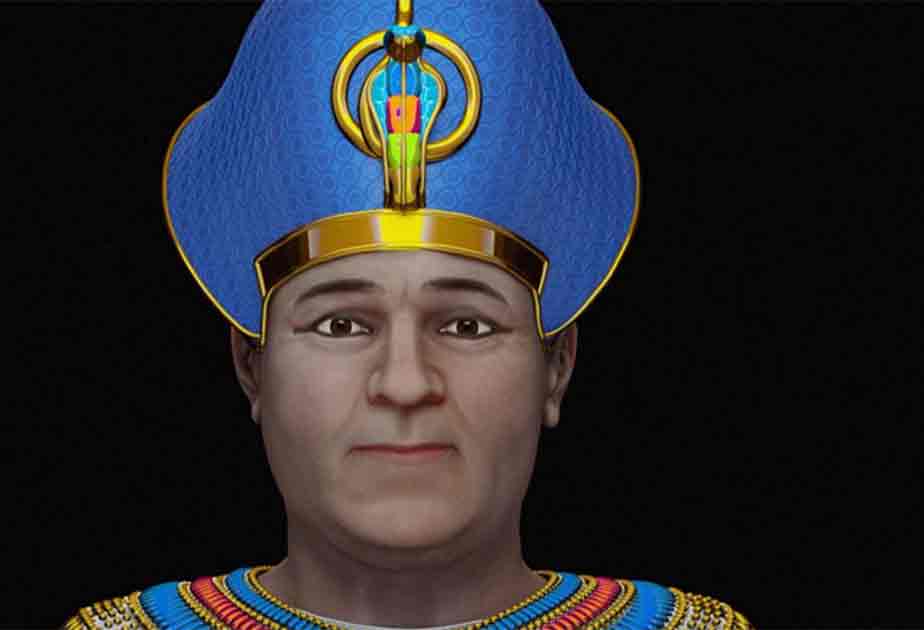Unveiling the Face of Amenhotep III: The 'Richest Man Who Ever Lived'
Amenhotep III, one of the greatest pharaohs of ancient Egypt, reigned during the height of Egypt's power 3,400 years ago. Known for his unparalleled wealth and grand architectural achievements, Amenhotep III has captivated historians and archaeologists for generations. Despite his prominence, a scientific reconstruction of his face had never been attempted—until now.
A multinational team of experts, including the now famous Cicero Moraes, has unveiled the true likeness of this legendary ruler using advanced forensic techniques and data from his mummy's skull.
The Scientific Process Behind the Reconstruction
According to the Daily Mail coverage, Michael Habicht, an archaeologist at Flinders University in Australia, spearheaded the project. Habicht describes how Amenhotep III's actual appearance was quite different from his statues, of which there were many.
- Amenhotep III, the Man and his Monuments – Part 1
- Forensic Facial Reconstruction: The Journey to Connect with our Ancestors

Colossal statue of Amenhotep III in the British Museum (A. Parrot/ Public Domain)
"It's a placid face for a man who promoted peace and lived in a time of the greatest economic prosperity," Habicht noted, highlighting the contrast between the serene visage and the powerful image portrayed in ancient art.
Using the pharaoh's skull, Brazilian graphics expert Cicero Moraes digitally recreated his face, integrating additional data from living donors to estimate the dimensions of his facial features.
- Reconstruction Reveals True Face of 9,000-Year-Old Jericho Skull
- Amenhotep III, The Man and his Monuments: Age of Empire and Architecture

Left; Mummified head of Amenhotep III following unwrapping. Right; Moraes used the skull and data from living donors to reconstruct the facial features of Amenhotep III (Left; Public Domain, Right; Cicero Moraes)
A Glimpse Into Amenhotep III's Life and Legacy
Amenhotep III's reign was marked by significant achievements in architecture and diplomacy. He constructed numerous temples, including a vast temple to his cult at Thebes, and built the palace complex of Malqata. His colossal statues, known as the Colossi of Memnon, still stand as testaments to his grandeur.
Despite being one of the most prominent kings of the Eighteenth Dynasty during the New Kingdom era, his mummy reveals that he was relatively short, standing at approximately 156 cm (5 feet 1 inch). This stature is in stark contrast to the towering statues that depict him.

The mummy of Amenhotep III during unwrapping. (G. Elliot Smith/Public Domain)
The pharaoh's wife, Tiy, played a significant role in his reign, appearing frequently in monuments. Amenhotep III's diplomatic letters also provide insights into his wealth and influence. Foreign leaders often requested gold from him, a resource as abundant in Egypt as sand, they claimed. Some speculate that his mummy might have been covered in gold leaf, further emphasizing his divine status.
Although the headlines (including ours) claim he was the ‘richest man to have ever lived’, this is subject to some speculation. Determining the richest person in history is troublesome, due to accuracy of historic records and making a comparison of wealth over time.
Although Amenhotep III is a contender and certainly had vast wealth, two other names often come up as the richest ever - Mansa Musa, king of the West African empire of Mali in the 14th century, is frequently mentioned, and the far more modern John D. Rockefeller, the American oil magnate of the 19th and early 20th centuries is also considered.

Forensic digital reconstruction of Amenhotep III ( Cicero Moraes)
The Final Revelation and Historical Significance
The reconstruction process was intricate and meticulous. Moraes and his team utilized data from individuals with a high body mass index to reflect the pharaoh's robust appearance. The final result, a complete bust with detailed colors and facial features, offers a vivid glimpse into the past. "Seeing a complete bust with these colors and the facial serenity is quite satisfying. It is our gift to all those who appreciate history," Moraes remarked, reports the New York Post.
Amenhotep III's divine status in life was affirmed by his claim that the god Amun was his true father. His name, meaning "Amun is satisfied," reflects this belief. He died between the ages of 40 and 50, leaving a kingdom at the zenith of its power to his son, Amenhotep IV. The new pharaoh, later known as Akhenaten, would initiate significant religious reforms, only for his son, Tutankhamun, to restore the worship of Amun.
This groundbreaking facial reconstruction not only brings us face-to-face with one of Egypt's most influential rulers but also deepens our understanding of the cultural and historical context of his time. The research by Habicht, Moraes, and their colleagues provides a tangible connection to the past, enriching our appreciation for the legacy of Amenhotep III.
Top image: Reconstruction of Amenhotep III. Source: Cicero Moraes
By Gary Manners
















